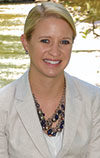And no, that headline isn’t the start of a cheesy joke. This was my reality every Friday at 1 p.m. when the University of Maryland’s Introduction to Dairy Judging class met this past spring semester.
As the beginning of the semester neared, I was ecstatic when I found out I had 15 students enrolled for the Introduction to Dairy Judging class. While I had hoped that the class would garner some attention, I certainly didn’t expect to meet the maximum seat allotment. Between the low expectations I had for the class and my own curiosity, I decided to view the roster to see if those enrolled were students I had known previously or shamelessly begged to take the class.
Much to my amazement, the majors listed next to the students’ names included neuroscience, astronomy, physics and a variety of others, with the minority being animal science. These students definitely did not fit the demographic I assumed would be taking an Introduction to Dairy Judging class.
Lesson 1: Don’t assume. Don’t exclude. Give them a chance.
Since I grew up in the dairy industry without a traditional farm background, I tended to feel, at times, that it was assumed I couldn’t or wouldn’t come to fully understand and appreciate the industry’s inner workings.
The irony of it all was that, as I read through the majors of my students, I was underestimating their intentions and true interest to learn about dairy. After some self-reflection, I realized I had to give these students a chance and welcome them “into the industry,” just as I had been welcomed more than 20 years ago.
Even after my self-inflicted wake-up call, I admit I was still a bit skeptical. I was convinced these students just needed an easy two-credit class to round out their schedule or that they thought dairy judging meant taste-testing and ranking various flavors of ice cream.
Lesson 2: They’ll surprise you with how much they care.
The first day of class was a total surprise. I had planned to start out with the very basics of evaluating dairy cattle: breeds of cows and the judging scorecard. Quickly, I had to totally revamp my entire approach to class. Questions of all sorts started to fly: How do dairy farmers get paid? How much milk do cows produce? Why do you take calves away from their mothers?
What this first class session and the rest of the semester turned into was the most motivating advocacy opportunity I have ever been a part of. The students routinely stayed 25 minutes after class was officially over, on a Friday no less, to have their questions about milk and dairy farming answered.
Their questions were inquisitive and educated. I could tell they didn’t necessarily distrust agriculture – they just simply had questions. And thankfully, instead of Google, they turned to me to provide the answers.
Lesson 3: Seize the opportunity.
The level of engagement and interest from my class was certainly not one I was going to waste. After the first class, I threw the majority of my dairy judging lesson structure out the window and decided to adapt “Introduction to Dairy Judging” to be more of a comprehensive “Introduction to Agriculture.” In my opinion, there is no better way to teach agriculture than on a functioning farm. So that’s what I did.
I contacted Dave and Katie Pyle at Cow Comfort Inn Dairy in Union Bridge, Maryland, to ask if they were willing to host us for a farm tour. I had described my class demographics, and the Pyles were thrilled to host, seeing it as a key opportunity to not only educate but to be educated as well.
What came out of that visit was a first-person appreciation and understanding from my students of just how skilled, smart and multi-talented dairy farmers have to be in order to be successful. We also created a Facebook group for the class to adopt their own Jersey calf and continue to engage with dairy farmers even though the class is over.
As well, the Pyles gained additional connections with up-and-coming experts in environmental science, physics and other fields who they can now tap for different perspectives on their business.
Now I understand that not all of us get the chance to tell agriculture’s story to a room of engaged, urban college students on a weekly basis. But whether it’s a neuroscience major or your friend from high school, I challenge you to remember these few lessons I’ve discovered in my class.
Consumers of all demographics should be given a chance to share their interest, ask questions and be included in the conversation. Don’t exclude them; doing so will only continue the cycle of ignorance and distrust that complicates telling agriculture’s story to consumers.
You’ll be surprised, as my 20-something college students demonstrated, at how much they care. I can still hardly believe that any college student, on a Friday afternoon, would want to learn about dairy cows and where their food comes from instead of starting their weekend early. But they do. They care. And we, in turn, have to care about them too.
So when an astronomer, physicist and a neurosurgeon walk into whatever your “classroom” is, seize the opportunity. ![]()
Emily Yeiser Stepp previously served as the dairy and beef extension coordinator with the University of Maryland.

-
Emily Yeiser Stepp
- Director, FARM Animal Care Program
- National Milk Producers Federation




